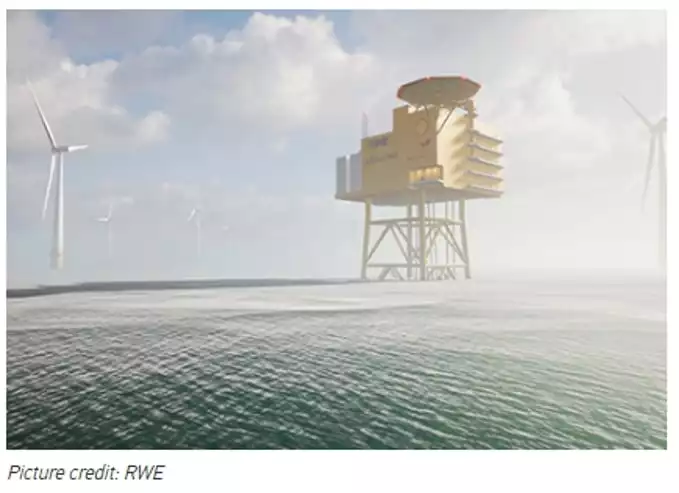Hydrogen Fuel Cells & Platinum – The Race is On
News
|
Posted 20/08/2021
|
11614
As vehicle manufacturers quickly reposition toward electrification, the debate remains around whether batteries versus hydrogen fuel cells keep them going. The former might be fine in highly populated Europe or California, but Australia is a stark reminder that battery technology has a long way to go before being viable for our distances and infrastructure. The 2 giants are on each side, VW going the battery route and Toyota the hydrogen fuel cell route. Even then, VW concede the use of batteries for transport and shipping is far from viable.
Batteries are constrained by long recharging times and available charging infrastructure. Hydrogen is much like fuel, you ‘fill her up’ and off you go.
Sustainable hydrogen production is largely achieved via electrolysis whereas most hydrogen now is via ‘steam reforming’ using methane (from natural gas) and a huge CO2 biproduct output. It’s days are clearly numbered. The predominate facilitator of electrolysis is PEM technology and, you guessed it, the P stands for Platinum. Because hydrogen fuel cells are less understood by the masses than batteries, lithium has dominated people’s green investment thesis whereas platinum continues to fly under the radar, for now.
Platinum, like many commodities has had a torrid run since May with the USD price now down to $980 at the time of writing. This has been off USD strength which has also seen the AUD/USD drop over the same time from 79c to just 71.5c at the time of writing. That has shielded AUD platinum from a lot of those falls. Irrespective, the price has had a very nice correction ahead of this new demand and the very real supply issues we have written about many times but most recently here. We also wrote earlier this year about how palladium saw spectacular rises off a similar dynamic.
Ainslie is the exclusive retailer for the new inaugural 2021 1/10th oz Platinum Kookaburra coins and they are now available for sale. We also have the 1oz Platinum Roo as well.
Below, the World Platinum Investment Council schools us up about the inroads Siemens is making in the space and the sheer scale of the endeavour. It’s definitely worth a read.
“Platinum-based proton exchange membrane (PEM) electrolysis can produce green hydrogen from renewable energy sources, enhancing grid stability and power storage, bringing about sustainable and dependable power sector transformation.
Yet this is just one aspect of the transformative power of green hydrogen. It is a carbon-free fuel which, according to Siemens Mobility, is the ‘oil of the future’, produced by the electrolysis of water using electricity from renewable sources, typically wind and solar.
As an energy carrier green hydrogen enables ‘sector coupling’, allowing decarbonisation of the wider economy through the integration of renewable power generation with consumers of energy, providing the medium by which renewable energy is transferred across the supply chain, displacing fossil fuels.
Crucially, green hydrogen overcomes constraints such as proximity to renewable infrastructure, delivering the emissions-free benefits of renewable energy beyond traditional hubs. Even hard-to-abate industries - heavy industry and heavy transport which account for around 40 per cent of total carbon emissions and where direct electrification or battery technology is not optimal - can benefit.
Effectively, through green hydrogen, excess renewable energy can be harnessed and supplied to end-users, for example to be used in refuelling networks for fuel cell electric vehicles.
Developing supply chains
Green hydrogen has the potential to become a global commodity that is traded in much the same way as oil and gas is today. However, this depends on the availability of the necessary, scalable infrastructure to store and transport it.
While scope exists to utilise existing gas networks, projects involving new hydrogen pipeline systems are already underway, with a major initiative in the North Sea highlighting how sector coupling might be achieved by building-out across the hydrogen value chain, from the production of green hydrogen using offshore wind energy, to its transportation via a new pipeline to consumers on shore in mainland Germany and beyond.
The plan is to create ten gigawatts of generation capacity by 2035, enough to produce up to one million tonnes of green hydrogen per year, making a substantial contribution towards the decarbonisation of energy supply in Europe.
Siemens Gas and Power has signed a co-operation agreement with Uniper, a global energy company, to develop projects aimed at the decarbonisation of Uniper’s power generation activities. The collaboration is focused on the promotion of sector coupling, addressing the entire value chain and looking at the energy, mobility and industry sectors together. The partners will also consider the feasibility of repurposing Uniper’s existing gas turbines and gas storage facilities for the use of hydrogen.
The total global demand for hydrogen is currently at around 70 to 80 megatons a year with over 90 per cent derived from fossil fuels, mainly natural gas. Siemens estimates that, by 2050, this will have risen to over 450 megatons per year, dominated by green hydrogen and essential to achieving global decarbonisation. The scale of this growth ensures that a wide range of technologies will be employed to achieve the most cost- and CO2-effective solutions.”
